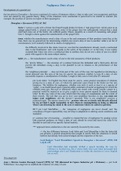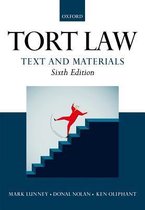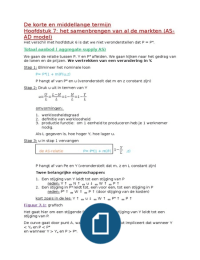Class notes
Negligence
- Course
- Institution
- Book
This set of notes covers all elements of the tort of negligence (duty of care, breach, causation, defences), including each specific duty of care scenario (psychiatric injury, pure economic loss, failure to confer benefit). The document contains lecture notes, case summaries, extracts from the ...
[Show more]






